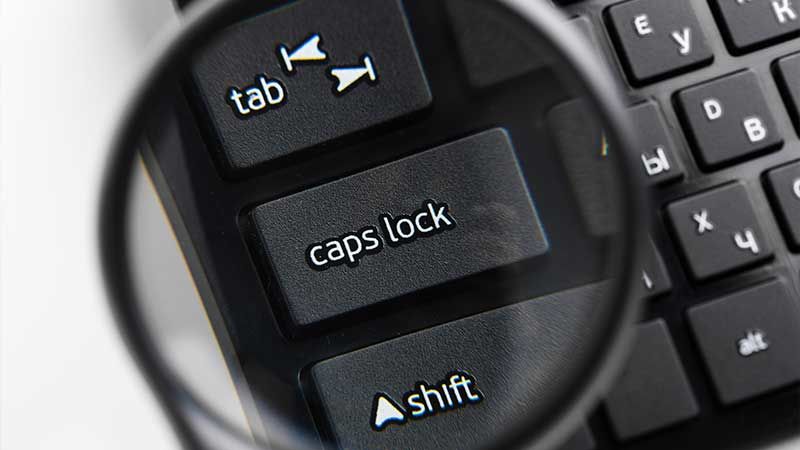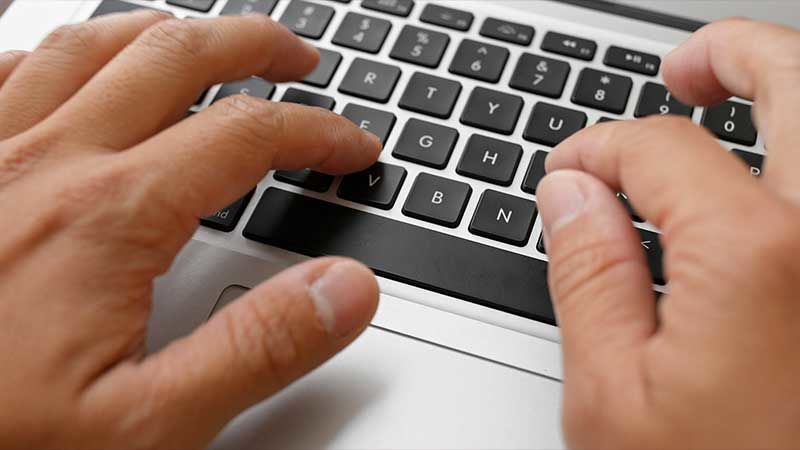Windows keyboard shortcuts make your work much easier so that you can use your computer faster and more effectively.
Windows keyboard shortcutsare operations that speed up computer use and increase efficiency, usually performed with one or more key combinations. These methods make it easier for users to interact with interface elements and can reduce time-consuming operations to seconds.
Windows Keyboard Shortcuts and Usages
The history of keyboard shortcuts dates back to the early days of computers. The first shortcuts were designed to allow users to work faster in command line interfaces. For example, in older DOS systems, function keys were used to speed up certain operations. With the development of graphical user interfaces (GUI), shortcuts have become more widespread and have taken on a structure assigned to a wide variety of functions, as in today’s modern operating systems.
Windows Keyboard Shortcuts and Usages
The Importance of Keyboard Shortcuts
The importance of keyboard shortcuts is undeniable, especially for professionals with a busy work schedule. These shortcuts increase the speed of operations that require constant mouse use and reduce users’ hand movements. This saves time and offers ergonomic benefits in the long run. For example, the combinations “Ctrl + C” and “Ctrl + V” make it possible to copy and paste text in seconds.
You May Be Interested In: Windows Cannot Load Required Files: Problems and Solutions
Essential Keyboard Shortcuts for Windows
Windows operating system offers various keyboard shortcuts to speed up users’ workflows and simplify their operations. These shortcuts are effective tools that simplify switching between programs, file management and desktop organization.
Shortcuts for General Use
General usage shortcuts provide quick solutions for basic operations that almost every Windows user needs. For example:
- Ctrl + C: Copy
- Ctrl + V: Paste
- Ctrl + X: Cut
- Ctrl + Z: Undo
- Alt + Tab: Quick switch between open windows
- Windows + L: Locking the computer
- Ctrl + Alt + Del: Open security options
These shortcuts save time and simplify operations in daily use.

Windows Keyboard Shortcuts and Usages
File Management Shortcuts
Here are some basic shortcuts you can use when working with files and folders:
- Ctrl + N: Open new window
- Ctrl + W: Close active window
- Alt + Up Arrow: Go to parent folder
- Ctrl + Shift + N: Create new folder
- F2: Rename the selected file or folder
- Ctrl + F: Search files or folders
These shortcuts allow you to perform file management tasks more quickly and effectively.
You may be interested in: How to find Windows 11 Wi-Fi password?
Window and Desktop Management
Shortcuts you can use for effective desktop and window management:
- Windows + D: Show or hide the desktop
- Windows + M: Minimize all windows
- Windows + E: Open Windows Explorer
- Windows + Tab: Open task view
- Windows + Left/Right Arrow: Align the window to the left/right of the screen
- Windows + Up/Down Arrow: Maximize the window or reduce the window size
These shortcuts help you make the most efficient use of your screen space when multitasking.

Windows Keyboard Shortcuts and Usages
All Windows Keyboard Shortcuts And Their Results
| Windows Hotkeys | Conclusion |
|---|---|
| Alt + Enter | Open the properties window for the selected icon or program |
| Alt + Esc | Switch between desktop apps on the taskbar |
| Alt + F4 | Close the program |
| Alt + Print Screen | Take a screenshot of the current page |
| Alt + Shift + Tab | Switch left between open apps |
| Alt+Tab | Switch right between open apps |
| Ctrl + (Right Arrow) | Move right one term at a time |
| Ctrl + (Left Arrow) | Move left one term at a time |
| Ctrl + A | Selects all text or files |
| Ctrl + Alt + Del | Restart/Windows task manager |
| Ctrl + C | Copy |
| Ctrl + Del | Cut selected item |
| Ctrl + End | Move to the end of a line in a document |
| Ctrl + Esc | These keys allow you to activate the start menu |
| Ctrl + F4 | Used to quickly close an open document or file |
| Ctrl + Home | Go to the beginning of the document |
| Ctrl + Ins | Copy the selected item |
| Ctrl + Plus Key | Automatically adjust widths of all columns in Windows Explorer |
| Ctrl + V | Pastes the item retrieved with Ctrl + C at the selected location |
| Ctrl + W | Close |
| Ctrl + X | Cuts the selected item |
| end | Go to end of current line |
| F1 | Universal help (for all types of programs) |
| F2 | Rename the selected icon |
| F3 | Find anything from your system’s desktop |
| F4 | From Windows 95 to XP, its purpose is to open the found window |
| F5 | Refresh the contents of your Windows system |
| Home | Takes the user to the beginning of the current line |
| Shift + Delete | When you press the Shift and Delete keys together, your program or files will be permanently deleted. |
| Shift + End | Highlight from current position to end of line |
| Shift + Tab | Switch between open applications/programs |
| Shiftt + Ins | Paste selected item |
| Tab and Shift + Tab | Move back and forth between options. etc. |
| Windows logo key + D | Show or hide the desktop |
| Windows logo key + L | Lock your computer |
| Windows logo key + Tab | Open Task View |
| Windows logo key + Shift + S | Saves the image of the selected area |
| Windows logo key + Left Arrow or Windows logo key + Right Arrow | Gluing windows |
| Windows logo key + Tab | Open task view |
| Windows logo key + X | Open the Quick Link menu |
| Windows logo key + Up Arrow | Maximize Window |
You May Be Interested In: How to pair a Windows 11 controller?
Frequently Asked Questions
What does Ctrl + Shift + N mean?
Ctrl + Shift + N is often used to open an incognito window in most internet browsers. In Windows, it is a shortcut to create a new folder.
What are Ctrl shortcuts?
Ctrl shortcuts are key combinations that are used together with the Ctrl key and generally include frequently used operations such as copy (Ctrl + C), paste (Ctrl + V), cut (Ctrl + X), and undo (Ctrl + Z).
What does CTRL + P do?
Ctrl + P is the shortcut usually used to print a document or a web page.
What does Ctrl + R mean?
In internet browsers, Ctrl + R is used to reload the current page. It can also be used to refresh the appearance of a document or page in some software (for example, Microsoft Word).
What does CTRL + F do?
Ctrl + F opens a find function that lets you search a document, web page, or a list.
What does CTRL + H do?
In most internet browsers and word processors, the shortcut Ctrl + H opens the ‘replace’ function, also used to view history in browsers.
What does Ctrl + F5 do?
Ctrl + F5 reloads the current page in your internet browser, bypassing the cache (clearing the cache). This ensures that the most current version of the page is loaded.
What is Ctrl + U?
Ctrl + U opens the function of viewing the source code of a web page.
What does Ctrl + F12 do?
In word processors such as Microsoft Word, Ctrl + F12 is used to open the ‘Open File’ dialog box.
What does Ctrl + F7 do?
In some applications, the Ctrl + F7 key combination allows you to navigate and move between windows.
What does Ctrl + Alt + F4 do?
Ctrl + Alt + F4 is a shortcut usually used to close the active application, but the functionality of this combination may vary from application to application.
What does Shift + F10 do?
Shift + F10 acts as the equivalent of a right-click menu and opens a context menu, usually the same as right-clicking on a selected object.
